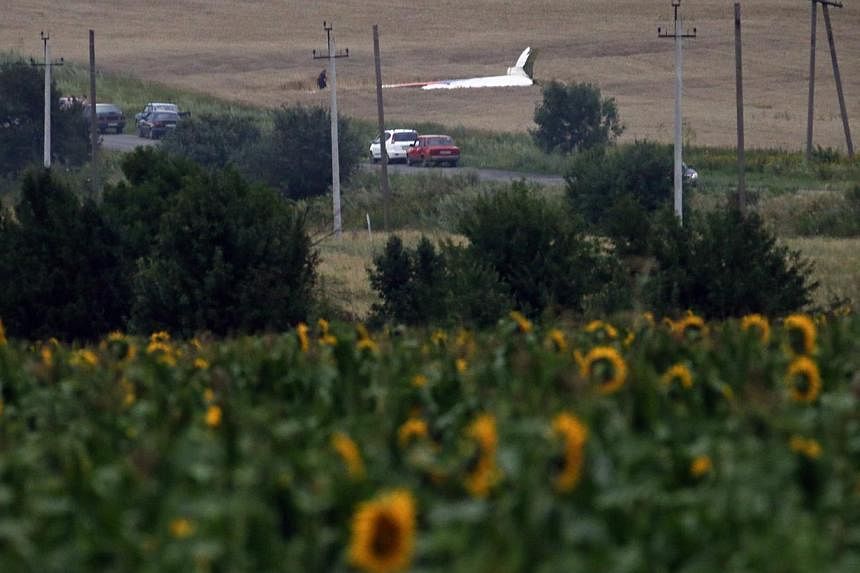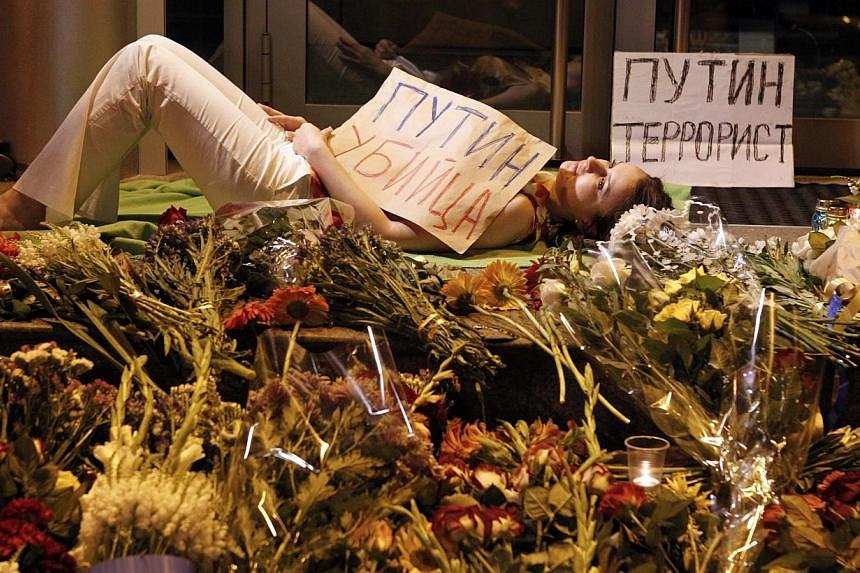The Malaysia Airlines MH17 plane crash has put the spotlight on the growing conflict between Russia and Ukraine.
Sources have claimed that separatists backed by Russia could be involved in the downing of the plane on July 17.
Here are 5 things about the Russia-Ukraine conflict.
1. How did it all start?
Protests broke out in November 2013 after Ukraine's then President Viktor Yanukovych's government rejected a far-reaching accord with the European Union in favour of stronger ties with Russia.
Thousands of people, outraged that a long-standing aspiration for integration with Europe had been ditched overnight, poured into central Kiev for peaceful protests.
Several developments - including police attacks on student protesters, severe new anti-protest laws, and the abduction and beating of opposition activists - caused the demonstrations to spread and intensify.
For many, the protests were less about Europe than about getting rid of a president who they believed was clinging to power and serving the interests of his own close circle and Moscow.
The sudden deterioration began on Feb 18, 2014 - and took many by surprise. Both sides blamed each other, but who threw the first stone or fired the first shot is still not clear.
On Feb 20, there was bloodshed in Kiev with at least 88 people killed in 48 hours, and nearly 600 wounded. Video showed police snipers firing live rounds at a group of protesters carrying makeshift shields.
Two days later Mr Yanukovych signed a deal with opposition leaders but he was forced to flee the country.
His arch-rival Yulia Tymoshenko was released from jail and a pro-EU government was installed.
2. Next stage of crisis: Crimea
By the end of February, pro-Russian gunmen seized buildings in the Crimean capital, Simferopol and the next stage of crisis began.
March saw Russia's parliament approve President Vladimir Putin's request to use force in Ukraine and Crimea was soon annexed by Moscow.
A referendum in Crimea saw over 97 per cent of them vote to join Russia in a move that the EU and other world powers consider illegal and void.
The EU and US then imposed travel bans and asset freezes on many Russian officials from Russia and Ukraine over the referendum.
Soon after, Mr Putin defended Russia's actions in Crimea and signed an agreement to absorb the peninsula into the Russia Federation.
Pro-Russian rebels in various cities across eastern Ukraine then decided they wanted to join Russia and protests have been taking place since April in Donetsk, Luhansk and Kharkiv, demanding a referendum.
3. What is at stake?
Mr Putin wants to make Russia a global economic player, rivalling China, the US and EU. To that end he is creating a customs union with other countries and sees Ukraine as a vital and natural element in that - not least because of the countries' deep cultural and historical ties.
The EU says assimilation and eventual membership could be worth billions of euros to Ukraine, modernising its economy and giving it access to the single market. It also wants to reverse what it sees as damaging infringements on democracy and human rights in Ukraine.
Many Ukrainians in the east, working in heavy industry that supplies Russian markets, are fearful of losing their jobs if Kiev throws in its lot with Brussels.
But many in the west want the prosperity and the rule of law they believe the EU would bring. They point out that while Ukraine had a bigger GDP than Poland in 1990, Poland's economy is now nearly three times larger.
4. Who are the key players?
Pro-Russia rebels, or separatists, have been fighting with Ukrainian government troops in eastern Ukraine. Russian authorities have claimed Crimea as Russian territory while the Ukrainian government claims Crimea is still a part of its country.
On March 16, a "referendum" for the integration of Crimea into the Russian Federation was held but called illegitimate by the Ukrainian government, the EU, the US and the UN General Assembly.
In elections in May, Petro Poroshenko, a billionaire tycoon in the chocolate business who is described as pro-European, became president of Ukraine.
As well as physical might, Mr Putin has been using the financial power of Russia to intimidate Ukraine.
As well as amassing troops on various border, Moscow has threatened to cut gas supplies to Ukraine if debt-stricken Kiev failed to pay off debts.
In the past week pro-Russian insurgents have been firing at aircraft in disputed areas of Donetsk.
5. US involvement
Soon after Mr Putin ordered troops into Ukraine, the US announced in March a US$1 billion loan guarantee to help Ukraine's bank and finance ministry with its financial affairs and help prepare the country for its national elections in May.
This week, US President Barack Obama announced sanctions against Russia, hoping to end the pro-Russia insurgency in eastern Ukraine. The sanctions target two major energy firms, financial institutions, eight weapons firms and four individuals.
Sources: ABC News, Daily Express, BBC, CNN, The Guardian, Moscow Times, AFP



